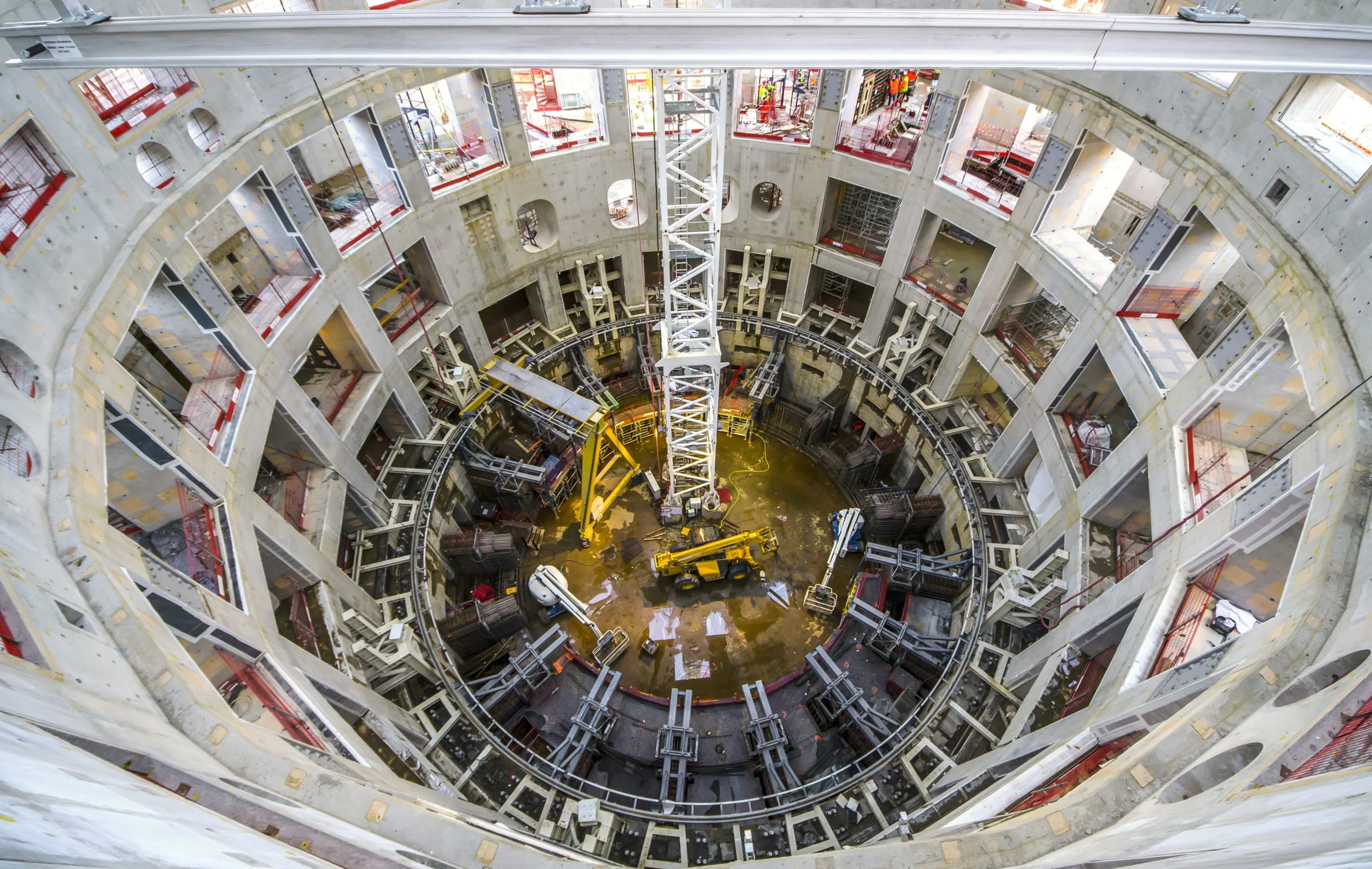When the last supply of MagnaDense took place in April 2020, about 6,000m3 of high density MagnaDense concrete is used for building the ITER research facility in Southern France.

ITER, which means ‘the way’ in Latin, is a collaboration between 35 countries to build the largest Tokamak in the world. A Tokamak is a magnetic fusion device designed to prove the feasibility of fusion as a large-scale and carbon-free source of energy based on the same principle that powers our Sun and stars.
From this immense device, neutrons will be released and to keep everyone safe, shielding against neutrons is needed in areas of the Tokamak Complex. The design has foreseen to use high density concrete at places where there is not enough space for ultra-thick walls made with standard concrete.
A high density concrete mix of 3.7 t/m3 includes MagnaDense, manufactured from the natural mineral magnetite, as well as 0.3% boron.
Besides the Tokamak, other parts need radiation shielding walls too. However, these parts will use a regular mixture of heavy concrete with only MagnaDense, cement and water.
Already in 2011, there was initial interest from the ITER project for our natural mineral, but as often with these large projects, it took another four years before the first supply of MagnaDense arrived at the construction site.
We have a lot of experience with Radiation Shielding projects in France
“It is not uncommon for such a large project to take a couple of years from initial contact until we receive the first order,” Patrice confirms. Garrot Chaillac is specialised in high density concrete solutions with MagnaDense in France and has years of experience in this industry.
The company constructing ITER opted for MagnaDense because first of all, there are a lot of other nuclear project references. Secondly, the product quality is of such high level (conforming to EN12620) that the concrete quality can be assured. And finally, the logistics of MagnaDense and the extensive experience of LKAB Minerals with on-time deliveries for such large projects made MagnaDense the preferred high density aggregate.
At the ITER project, the concrete ready-mix company making the final high density concrete is LaFarge. They have two concrete facilities on-site to mix all types of concrete for the project, including the MagnaDense concrete.
Each project requires a specific density; sometimes, even within one project, the different sections might require other densities. VINCI, the leading French building and civil engineering group, calculated the right high density concrete mixture for all parts in the ITER project.
Many high-end research facilities need shielding. And, over time, MagnaDense has been used in other large international research projects such as the ESS facility in Lund (Sweden) and the ELI project in Eastern-Europe. Besides these impressive projects, the most common use for MagnaDense in shielding is for hospital radiation shielding where radio treatment rooms need extra protection. As well as for nuclear waste containers to prevent the radiation from leaking.
With over 50 years of experience in this area, LKAB Minerals is proud to say they have worked with the most competent concrete mixers and contractors worldwide. “We supplied over hundreds of thousands of tonnes of MagnaDense, high density iron oxide, for radiation shielding,” Leon Hendriks, Magnetite Sales Manager at LKAB Minerals confirms.
In southern France, 35 nations are collaborating to build the world’s largest tokamak. The experimental campaign that will be carried out at ITER is crucial to advancing fusion science and preparing the way for the fusion power plants of tomorrow.
Thousands of engineers and scientists have contributed to the design of ITER since the idea for an international joint experiment in fusion was first launched in 1985. The ITER Members—China, the European Union, India, Japan, Korea, Russia and the United States—are now engaged in a 35-year collaboration to build and operate the ITER experimental device, and together bring fusion to the point where a demonstration fusion reactor can be designed.
A Case Study of this project in PDF is available, to access this, please contact us via the contact page or the contact form below.